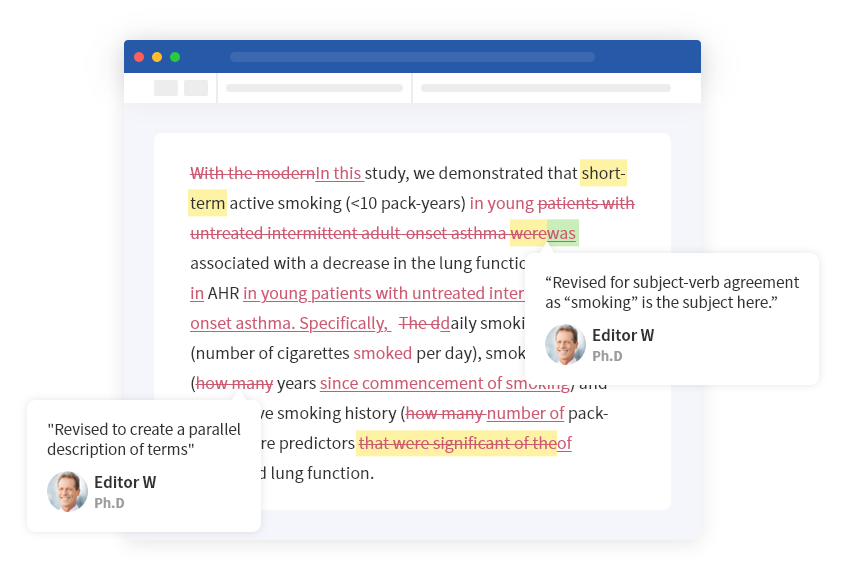
50% Discount on All First Editing Orders
Our team of revision experts improve your work with academic editing, admissions editing,
business editing, and editing services for writers.
Let us help enhance your writing today.

Our expert editors correct mistakes in grammar, punctuation, and spelling and improve the vocabulary, readability, and expression of your writing. Choose the editing service that works best for the needs of your document.
Academic subject experts correct vocabulary and enhance the flow and impact of your writing so you can submit your research paper with confidence.
$0.048 per word
Academic EditingExperienced admissions editors proofread your application essay and polish your writing, highlighting your strengths to get you into your school of choice.
$0.023 per word
Admissions EditingQualified editors enhance reports, brochures, and other documents to help businesses and professionals produce high-quality writing that will get results.
$0.048 per word
Business EditingOur personal-writing editors improve the flow and expression of your poem, book, blog, or personal essay to make it shine for your target readers.
$0.040 per word
Editing for WritersWhy Choose Wordvice? 100% Satisfaction. Guaranteed.
Wordvice offers high-quality editing and proofreading services. Our experienced editors carefully revise your document, eliminating errors and improving language, style, and organization.
Total Words Edited
365,843,685Documents Revised
338,000Institutions Supported
578Students Served
78,000Researchers Served
129,000Client Reorder Rate
89%Who Are Our Professional Editors?
Wordvice works with the most qualified editors with years of language editing and proofreading experience. We have over 500 professional editors with PhDs and advanced degrees and subject expertise in nearly 2,000 academic fields, and our order management system will match you to the best fit considering your field and the document you submit.
Simply choose your service and upload your document. We carefully select the best editor for the job based on your field and the nature of the document; they receive the document and your details/instructions immediately and get to work. Upload your document day or night, 365 days a year, with delivery as fast as 9 hours.

Select the document type and enter your word count to get a quote.

Tell us about your document, including the subject area and purpose of your paper, so we can match your work to the most appropriate editor. Upload your document and pay for your order.

Download your edited document, guaranteed within the requested delivery time.
